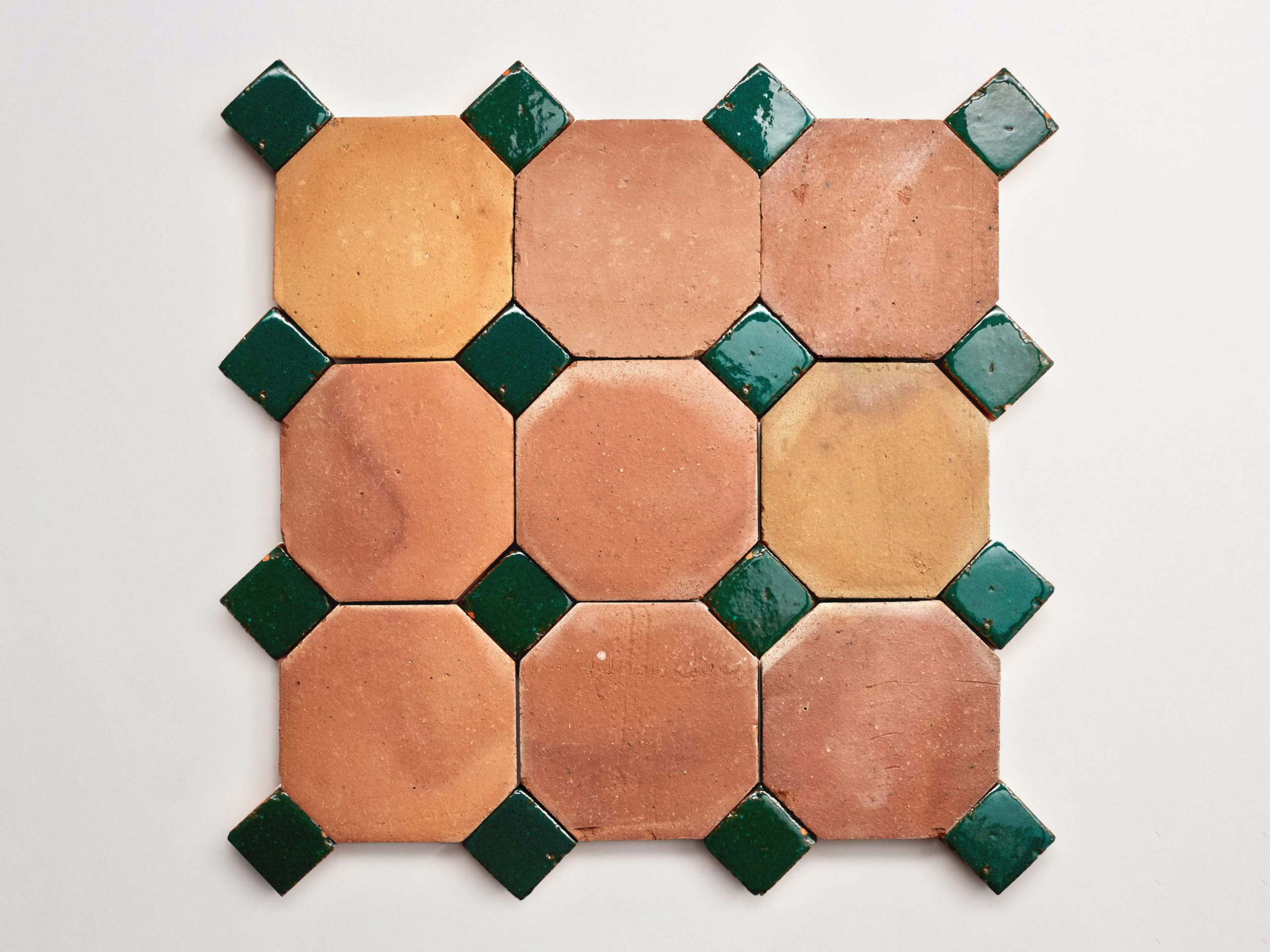Blog
The Global Appeal of Moroccan Tiles

Moroccan tiles, often referred to simply as “Moroccan-style” tiles, have garnered international acclaim for their vibrant colors, intricate patterns, and versatile applications in both interior and exterior designs. These tiles differ from traditional Moroccan zellij in their application and aesthetic, though they share a common heritage of detailed craftsmanship and artistic expression.
Design and Production
Moroccan tiles typically feature patterns that are bold and colorful, with designs that incorporate floral motifs, geometric shapes, and arabesque patterns. Unlike zellij, which consists of small pieces of tiles set into plaster to create complex mosaics, Moroccan-style tiles are often individually painted ceramic tiles. Each tile is a standalone piece of art, yet when combined with others, it contributes to a dynamic and cohesive visual tapestry.
The production of these tiles involves a meticulous hand-painting process followed by firing in a kiln, which enhances their durability while preserving the vividness of their colors. This traditional technique ensures that no two tiles are exactly the same, adding to their appeal and uniqueness.
Versatility in Decor
One of the reasons Moroccan tiles are popular worldwide is their versatility. They can be used in a variety of settings, from kitchen backsplashes and bathroom walls to flooring and outdoor patios. Their robustness and resistance to wear make them suitable for both residential and commercial spaces. Designers and homeowners are drawn to these tiles not only for their beauty but also for the character they add to any space.
Cultural and Aesthetic Appeal
Moroccan tiles reflect a blend of various cultural influences, including Arab, Berber, Spanish, and French. This amalgamation of styles makes them particularly appealing in global decor landscapes, fitting well with both contemporary and traditional designs. Their intricate patterns can serve as focal points in a minimalist setting or complement a more eclectic or bohemian style.
Environmental Adaptability
In addition to their aesthetic versatility, Moroccan tiles are known for their ability to adapt to various climates, making them ideal for use in different regions of the world. Their materials and finishing processes make them especially suitable for handling the rigors of both hot, sunny climates and colder, wetter conditions. This adaptability has boosted their popularity in a variety of markets internationally.
Conclusion
The global popularity of Moroccan tiles is a testament to their timeless beauty, cultural resonance, and practical versatility. They bring a piece of Moroccan heritage into homes and public spaces around the world, serving as a bridge between traditional craftsmanship and modern design needs. As they continue to adorn spaces worldwide, Moroccan tiles not only enhance the aesthetic appeal of these environments but also carry forward the rich artistic legacy of Morocco.







